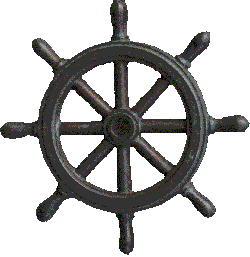 |
Crossing the
Plains Seattle The Great Plains stretch from the Mississippi to the mountains of the west. This was a land of bison, Indians, wide open spaces, and a sea of grass. Today it is intensely farmed, and produces much of the world's food, and the nation's wealth. This is pretty much the land acquired through the Louisiana Purchase, and was first explored by traders, fur trappers, and a variety of scoundrels, missionaries, outlaws, and assorted geograpers, biologists, and pioneers. It was, over a hundred years ago, what Alaska continues to be today. We watched the plains pass, from the dining car, and from our comfortable cabin. Lewis and Clark never had it so good. |
 |
|
|
Watching the farms and fields pass by, it is hard not to be amazed by the magnitude of agriculture in this country. |
|
|
|
|
|
A farmer tills his fields, making use of the machinery and automation which has made possible our massive food production. |
|
|
Though not as ostentatious, or obviously wealthy as the cities, and their industries, the real wealth and well being of any nation is held by the farmers, and contained within the land that they work. |
|
|
Water is a big deal here. The mountains to the west, cause updrafts which produce the rains which make the Pacific Northwest so lush. these same rains also dry the air out, and make water a far more precious resource here. These huge fields are fertile, and very easy to work, producing enormous amounts of food; but they rely on a very closely husbanded supply of water. |
|
|
|
|
|
A look at a North Dakota farmstead. |
|
|
|
|
|
Th etrain pulls into a station, and we all get off to look around, and to stretch our lets a bit. |
|
|
A layover in Minot, permits us to actually look around the town a bit. The train is stopping to lad fuel, water , and food. |
|
|
|
|
|
The rather new and modern station at Minot. Most people will simply sit here, perhaps get a soft drink, or a snack, and then check the local papers. |
|
|
The ticketing both at Minot. The town is substantial, serving both the local farmers, as well as a nearby airbase. |
|
|
|
|
|
Left: Most of the passengers mill around outside, enjoying the day, and the pre mountain scenery. Below: Refueling the train, while the engineers disembark. |
|
|
|
|
|
|
|
|
|
|
|
|
|
|
Above: At one time, passenger trains carried mail, and freight. There is still a baggage car; but it only carried passenger baggage now. Left: The rail side entrance to the station. |
|
|
The dining car staff takes a break. Smoking is not allowed on trains, and these breaks allow a welcome bit of relaxation, for those who have the habit. |
|
|
|
|
|
Above: The street side entrance to the station. Left: Looking like something out of the Old West, which perhaps it is, an old freight handling station sits at the edge of the tracks. |
|
|
Another source of food and revenue out here is cattle. As we get closer to the mountains, the land gets drier. It is not even worth attempting to farm these semi arid, hilly lands; but they are great for grazing cattle. |
|
|
|
|
|
Looking like the stereotypical western town, it even has a cattleman's bar. This is a rural town, serving the local ranchers. |